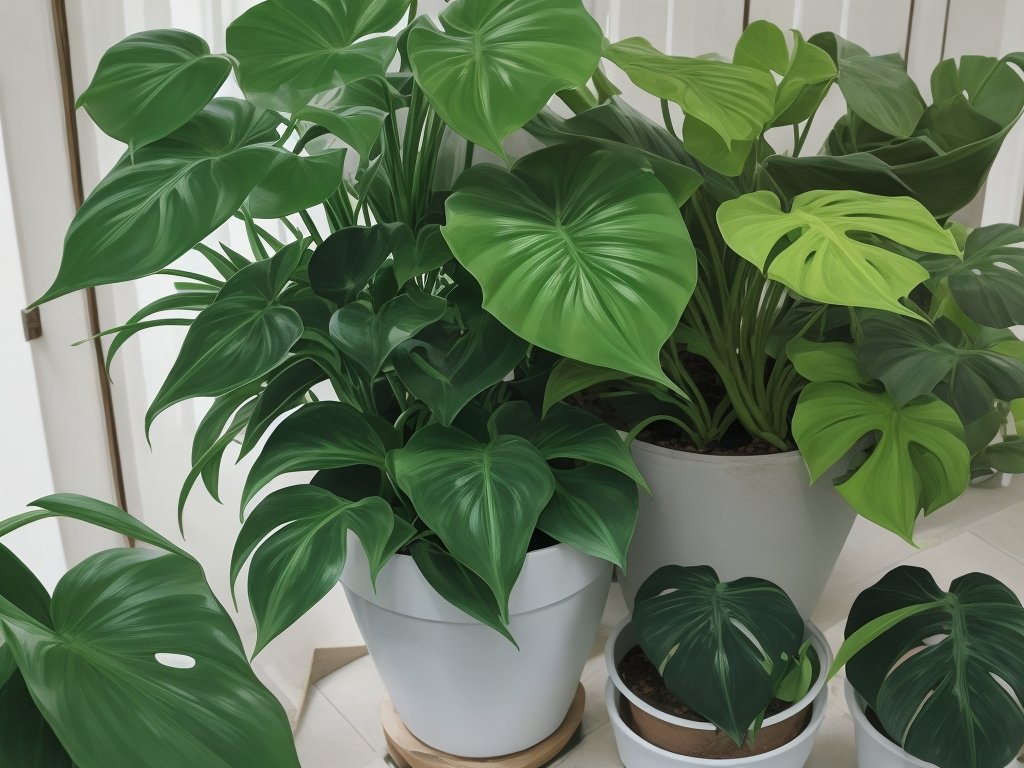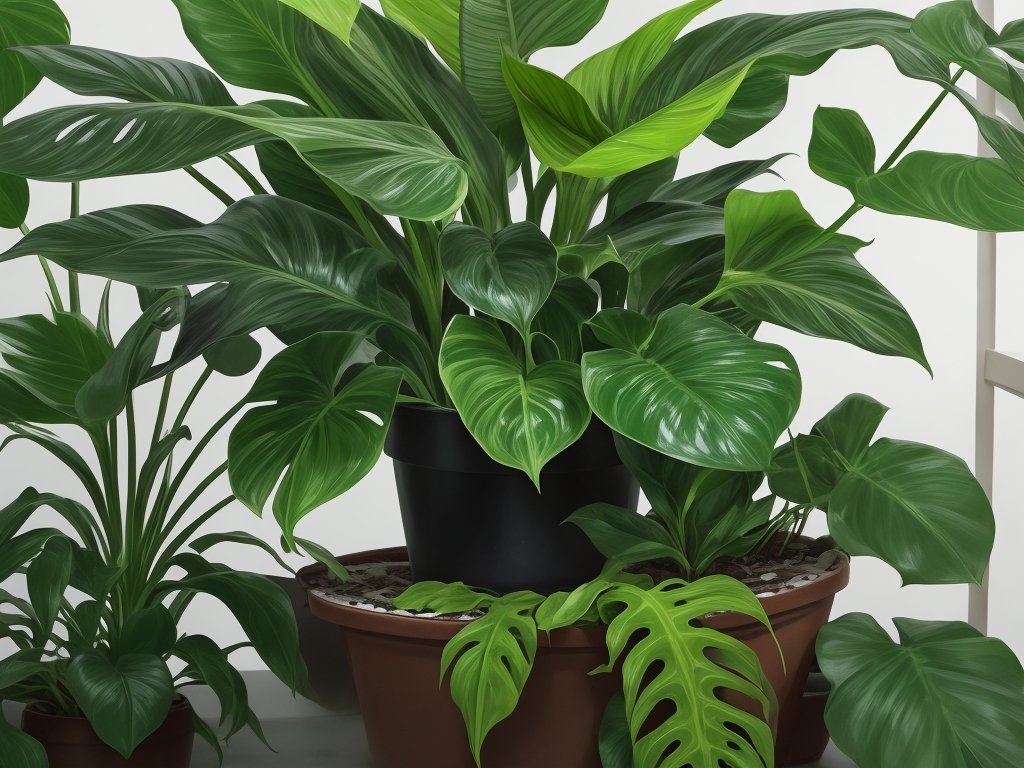Philodendron Pests Control – Conquer the invasion!
Key Takeaways:
- Regularly inspect your Philodendron plants for signs of pests.
- Use organic pest control methods to protect your Philodendron plants.
- Introduce natural predators to help control pest populations on your Philodendron plants.
- Maintain a clean and healthy environment to prevent pest infestations on your Philodendron plants.
Are your beautiful Philodendron plants falling victim to tiny invaders?
You might not even realize it until it’s too late.
But fear not, I’m here to help you take control.
In this article, we’ll dive into the world of Philodendron pests and explore how to identify the signs of infestation.
We’ll also discuss common pests that target these vibrant plants and their telltale characteristics.
But that’s not all – I’ll be sharing both natural remedies and chemical control options to get rid of these unwanted guests.
Plus, we’ll explore integrated pest management strategies to keep your Philodendron plants healthy and thriving.
Get ready to say goodbye to those pesky pests and hello to lush, vibrant foliage.
Trust me, your Philodendrons will thank you!
| Common Pests | Signs of Infestation | Treatment | |
| 1 | Mealybugs | White cottony spots on leaves and stems | Wipe with alcohol-soaked cotton swab or spray insecticidal soap |
| 2 | Spider Mites | Tiny webs on leaves, yellow spots, leaves drying out | Wash leaves with water, apply insecticidal soap or neem oil |
| 3 | Aphids | Small green, yellow, or black insects on leaves and stems | Squish with fingers or spray with soapy water |
| 4 | Scale Insects | Small bumps on stems and leaves, sticky residue, black mold | Scrape off with soft cloth, apply neem oil or insecticidal soap |
| 5 | Thrips | Silver or bronze streaks on leaves, distorted growth | Wash leaves with water, apply insecticidal soap or neem oil |
Identifying Philodendron pests
To successfully identify Philodendron pests, pay attention to signs of pest infestation and familiarize yourself with common pests and their characteristics.
Signs of pest infestation in Philodendron plants
Signs of pest infestation in Philodendron plants include discoloration or yellowing of leaves, holes or chewed edges on leaves, sticky residue or honeydew on leaves, webs or silk-like threads, presence of tiny crawling or flying insects, stunted growth, and wilting of the plant.

Common pests that affect Philodendron plants and their characteristics
The most common pests that affect Philodendron plants are mealybugs, spider mites, and aphids. Mealybugs are small, soft-bodied insects that produce a white, waxy substance.
Spider mites are tiny arachnids that create webbing on the leaves.
Aphids are small, sap-sucking insects that come in various colors. These pests can damage the plant by feeding on the leaves, causing wilting, yellowing, and stunted growth.
Regular inspection is important to catch infestations early.

Preventing Philodendron pests
Preventing Philodendron pests is all about proper care and maintenance practices, as well as creating a favorable environment for your plants.
Proper care and maintenance practices to prevent pests
To prevent pests in your Philodendron plants, it’s important to provide proper care and maintenance.
Here are some practices you can follow:
- Regularly inspect your plants for any signs of pest infestation.
- Keep your plants in a clean environment by removing any dead leaves or debris.
- Avoid overwatering, as it can create a damp environment that pests thrive in.
- Provide adequate sunlight and airflow, as healthy plants are less susceptible to pests.
- Quarantine new plants before introducing them to your existing collection to prevent the spread of pests.
- Use organic fertilizers and avoid over-fertilizing, as excessive nutrients can attract pests.

Creating a favorable environment for Philodendron plants
Creating a favorable environment for Philodendron plants is crucial for their health and growth.
Here are a few key factors to consider:
- Provide adequate sunlight: Place your Philodendron plants in a spot with bright, indirect light to promote photosynthesis and prevent leggy growth.
- Maintain optimal temperature and humidity: Philodendrons thrive in temperatures between 65-75°F (18-24°C and humidity levels of 40-60%. Use a humidifier or pebble tray to increase humidity if necessary.
- Water properly: Keep the soil evenly moist, but not soggy. Allow the top inch of soil to dry out before watering again.
- Ensure good drainage: Use well-draining soil and pots with drainage holes to prevent waterlogged roots and root rot.
- Avoid drafts and cold temperatures: Philodendrons are sensitive to drafts and cold temperatures, so keep them away from doors and windows.
By paying attention to these environmental factors, you can create an ideal setting for your Philodendron plants to thrive.
Natural remedies for Philodendron pests
Got pesky pests on your Philodendron?
Here are some natural remedies to keep them at bay: Homemade insecticidal soap solution and Neem oil spray.
Homemade insecticidal soap solution
To make a homemade insecticidal soap solution, mix a teaspoon of mild liquid dish soap with a quart of lukewarm water.
Pour this solution into a spray bottle and apply it directly to the affected areas of your Philodendron plants.
Be sure to coat both the upper and lower surfaces of the leaves.
Repeat this process every week or two, as needed, to control pests.
Neem oil spray for controlling pests
Neem oil spray is an effective natural remedy for controlling pests on Philodendron plants.
It works by suffocating and repelling pests like aphids, mealybugs, and spider mites.
To use it, mix neem oil with water and apply it to the leaves and stems of your plants.
Repeat every 7-14 days for best results.
Chemical control options for Philodendron pests
Chemical control options for Philodendron pests involve using appropriate insecticides and fungicides.

Insecticides suitable for Philodendron plants
Insecticides suitable for Philodendron plants include:
- Neem oil: An organic option that effectively controls aphids, spider mites, and other common pests.
- Pyrethrin-based insecticides: These are derived from chrysanthemum flowers and are effective against a wide range of pests.
- Systemic insecticides: These are absorbed by the plants and provide long-lasting protection against pests like scale insects and mealybugs.
- Horticultural oils: These suffocate pests like mites and aphids by coating their bodies, effectively controlling their population.
Always read and follow the instructions on the insecticide label, and use them sparingly and responsibly to avoid any harm to the plant.
Using fungicides to combat diseases that attract pests
Fungicides can be effective in controlling diseases that attract pests in Philodendron plants.
Look for fungicides specifically formulated for houseplants and follow the instructions carefully.
Make sure to spray the plant thoroughly, targeting the affected areas.
Regular application may be necessary to combat diseases and prevent pest infestations.
Integrated pest management for Philodendron plants
Integrated pest management involves using a combination of techniques to control pests on Philodendron plants.
It includes monitoring, prevention, and intervention strategies.
Understanding the principles of IPM
IPM stands for Integrated Pest Management. It’s a method that focuses on preventing and managing pests in a holistic way.
The key principles are:
- Identifying the pests and understanding their behavior.
- Using preventative measures such as proper care and maintenance practices.
- Creating a favorable environment for the plants.
- Using natural remedies like homemade insecticidal soap or neem oil.
- Utilizing chemical control options, if necessary, like insecticides or fungicides.
- Implementing a combination of strategies that suit your specific plant and pest situation.
Implementing IPM strategies for Philodendron pests
To implement Integrated Pest Management (IPM) strategies for Philodendron pests, start by identifying the pests and signs of infestation.
Practice proper care and maintenance, create a favorable environment, and use natural remedies like homemade insecticidal soap or neem oil spray.
If necessary, consider using appropriate insecticides or fungicides.
Understand the principles of IPM and follow them to effectively manage pests in your Philodendron plants.
FAQs about Philodendron pest control
How often should I inspect my Philodendron plants for pests?
Inspect your Philodendron plants for pests on a regular basis, ideally once a week. Regular inspections allow you to catch any signs of pest infestation early and take appropriate action to prevent further damage.
Keep an eye out for any unusual spots, webs, or holes on the leaves, as well as any insects you may find.
Can I use household cleaners to control Philodendron pests?
No, you should not use household cleaners to control Philodendron pests.
They are not designed for use on plants and can be harmful.
Instead, try natural remedies like homemade insecticidal soap or neem oil spray, or consider using appropriate chemical control options or integrated pest management strategies.
Final Verdict
Identifying and preventing pests in Philodendron plants is crucial for their health and longevity.
By closely monitoring your plants and implementing proper care and maintenance practices, you can create a favorable environment that deters pests.
Natural remedies such as homemade insecticidal soap solution and neem oil spray can effectively control pests without harming the plants.
If the infestation persists, chemical control options like insecticides and fungicides can be considered.
Integrated pest management (IPM) principles should be followed for long-term pest control.
Regular inspections and avoiding the use of household cleaners are important practices to ensure the health of your Philodendron plants.
With these strategies in place, you can successfully protect your beloved Philodendrons from pests and enjoy their beauty for years to come.







